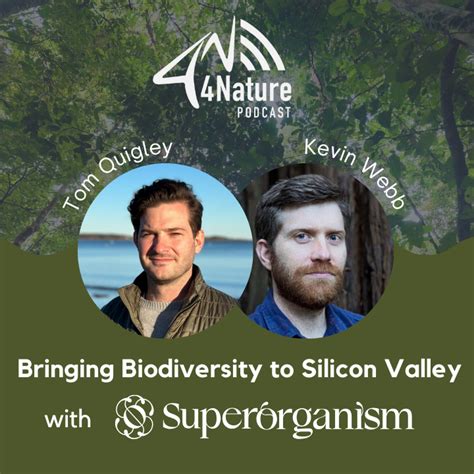
“Superorganisms,” complex colonies exhibiting collective intelligence and behavior, have been observed in the wild, challenging previous assumptions that these structures primarily exist in controlled laboratory settings. This groundbreaking discovery provides new insights into the sophisticated communication and coordination mechanisms within social insect colonies and other communal entities.
For decades, the concept of superorganisms – where individual organisms act as a single, unified entity – has largely been confined to theoretical discussions and laboratory experiments. However, recent observations have confirmed the existence and operational functionality of these complex systems in their natural habitats. Researchers are now gaining a better understanding of how these collective intelligences emerge and what evolutionary advantages they offer. This has opened doors for studying self-organization and distributed problem-solving in biological systems on a larger scale.
The term “superorganism” isn’t new, but the realization that it’s readily observable in the wild under natural circumstances provides a new avenue for study. It pushes the boundaries of our understanding of biology and collective behavior, shifting how we view the dynamics of social groups. These findings may also have broader implications, potentially informing fields like artificial intelligence, robotics, and network science, where understanding decentralized control and emergent behavior is crucial.
Expanding the Understanding of Superorganisms
Superorganisms are defined as social units where individual organisms work together in a coordinated manner to achieve common goals, much like cells within a body or organs within a system. Key examples include ant colonies, bee hives, termite mounds, and even certain slime molds. These colonies are not just aggregations of individuals; instead, they display complex behaviors such as division of labor, coordinated defense, collective foraging, and intricate communication systems. These behaviors are what grant them the status of a superorganism, as they act in many ways like a single, unified organism.
One of the most crucial aspects of a superorganism is its ability to adapt and respond to changes in its environment more effectively than individual organisms could alone. The collective intelligence that emerges from these systems enables them to solve complex problems, optimize resource allocation, and navigate challenging conditions. This emergent intelligence arises from the interactions and communication between individual members, and is not necessarily programmed or directed by a central authority.
The recent observations of superorganisms in the wild have provided invaluable data on the structures, behaviors, and environmental interactions of these systems. They enable researchers to study them in their natural context, without the constraints and artificiality of laboratory setups. This has already led to a number of surprising discoveries, including the existence of previously unknown communication signals, novel forms of division of labor, and more complex models of collective decision-making.
For instance, researchers have documented sophisticated methods of nest construction and maintenance in wild ant colonies, demonstrating how collective effort and coordination can produce remarkably complex and durable structures. Similarly, studies on wild bee hives have revealed the intricate dance language used by bees to communicate the location and quality of food sources, allowing the colony to efficiently exploit available resources. These observations have not only confirmed the existence of superorganismic behaviors in the wild, but have also provided insights into the underlying mechanisms that drive these behaviors.
Evolutionary Significance
The evolution of superorganisms is a topic of intense interest in evolutionary biology. Understanding how individual organisms transition from independent existence to being parts of a cohesive collective is a fundamental question in the field. One prevailing theory suggests that superorganismic behavior evolves when the benefits of cooperation and coordination outweigh the costs of individual autonomy. This can occur when individuals face common threats or challenges, or when they can achieve greater success by working together than they could alone.
Kin selection, the process by which individuals favor the reproductive success of their relatives, is also thought to play a crucial role in the evolution of superorganisms. When individuals are closely related, they share a significant proportion of their genes, and helping their relatives to reproduce can be a way of increasing their own genetic representation in future generations. This can lead to the evolution of altruistic behaviors, where individuals sacrifice their own reproductive potential to benefit the colony as a whole.
Another important factor in the evolution of superorganisms is the environment in which they live. Species that inhabit harsh or unpredictable environments may be more likely to evolve superorganismic behavior, as cooperation and coordination can increase their chances of survival. For example, termites, which live in dry and nutrient-poor environments, have evolved highly complex social systems that allow them to efficiently exploit available resources.
Communication and Coordination
Effective communication and coordination are essential for the functioning of any superorganism. Individuals must be able to exchange information about their environment, their needs, and their intentions, and they must be able to coordinate their actions to achieve common goals. Superorganisms use a variety of communication methods, including chemical signals (pheromones), tactile signals (touching and grooming), auditory signals (sounds and vibrations), and visual signals (dances and displays).
Pheromones are particularly important in social insect colonies, as they can be used to convey a wide range of information, from the presence of food to the location of danger. Ants, for example, use pheromone trails to guide their nestmates to food sources, while bees use pheromones to regulate the behavior of the queen and other members of the hive.
Tactile signals are also commonly used for communication and coordination. Ants often use antennal tapping to exchange information about their environment, while bees use grooming to maintain social bonds and transmit chemical signals. Auditory signals can also play a role in communication, particularly in species that live in dark or enclosed environments. Termites, for example, use drumming sounds to communicate warnings of danger to their nestmates. Bees use vibrations on the honeycomb to communicate information about food sources and to stimulate activity within the hive.
Visual signals are less common in superorganisms, but they can be important in certain contexts. Bees, for example, use the waggle dance to communicate the location and quality of food sources to their nestmates. This intricate dance involves a series of movements and vibrations that convey information about the distance, direction, and profitability of the food source.
Implications for Science and Technology
The study of superorganisms has significant implications for both science and technology. Understanding how these complex systems function can provide insights into a wide range of phenomena, from the emergence of collective intelligence to the evolution of social behavior. It can also inspire new approaches to problem-solving in fields such as artificial intelligence, robotics, and network science.
In artificial intelligence, researchers are drawing inspiration from superorganisms to develop algorithms that can solve complex problems in a decentralized and self-organized manner. For example, ant colony optimization algorithms are used to find optimal solutions to problems such as routing and scheduling, by mimicking the foraging behavior of ants. These algorithms have been successfully applied to a wide range of real-world problems, including traffic management, supply chain optimization, and telecommunications network design.
In robotics, researchers are developing swarms of robots that can work together to perform tasks that would be impossible for a single robot to accomplish. These swarms are inspired by the collective behavior of social insects, and they rely on decentralized control and communication to achieve their goals. Swarm robotics has potential applications in a variety of fields, including search and rescue, environmental monitoring, and construction.
In network science, researchers are studying superorganisms to understand how complex networks can be designed to be robust and resilient. Social insect colonies are highly resilient to disturbances, such as attacks by predators or changes in the environment. This resilience is due to the decentralized nature of their organization, and the ability of individuals to adapt and respond to changes in their environment. By studying the network structure of superorganisms, researchers can learn how to design more robust and resilient networks for a variety of applications, including communication networks, transportation networks, and power grids.
Specific Examples of Superorganisms
- Ant Colonies: Ant colonies are perhaps the most well-known examples of superorganisms. A single colony can contain millions of individuals, each with a specific role to play. These roles include foraging, nest building, defense, and brood care. Ants communicate using chemical signals called pheromones, which they use to coordinate their activities and respond to changes in their environment. Ant colonies exhibit remarkable collective behaviors, such as building complex nests, raiding other ant colonies, and defending their territory against intruders.
- Bee Hives: Bee hives are another classic example of superorganisms. A bee hive consists of a queen, thousands of workers, and a few drones. The queen is responsible for laying eggs, while the workers perform all the other tasks necessary for the survival of the colony, such as foraging, building honeycomb, and caring for the brood. Bees communicate using a variety of signals, including pheromones, dances, and vibrations. Bee hives exhibit complex collective behaviors, such as building honeycomb, foraging for nectar and pollen, and regulating the temperature inside the hive.
- Termite Mounds: Termite mounds are massive structures built by termites, often housing millions of individuals. Termites are social insects that live in colonies, and they are known for their ability to digest cellulose, which is the main component of wood. Termite mounds provide a stable and protected environment for the termites, and they also serve as a source of food. Termites communicate using a variety of signals, including pheromones and vibrations. Termite mounds exhibit remarkable collective behaviors, such as building complex tunnels, cultivating fungus gardens, and defending their territory against intruders.
- Slime Molds: Slime molds are a type of amoeba-like organism that can aggregate into a multicellular structure under certain conditions. When food is plentiful, slime molds exist as individual cells that move and feed independently. However, when food becomes scarce, the cells aggregate together to form a slug-like organism that can move to a new location. The slug eventually transforms into a fruiting body, which releases spores that can germinate into new individual cells. Slime molds exhibit remarkable collective behaviors, such as aggregating to form a slug, moving towards a light source, and forming a fruiting body.
Challenges and Future Directions
Despite the significant advances that have been made in the study of superorganisms, there are still many challenges to overcome. One of the biggest challenges is understanding how individual organisms contribute to the collective behavior of the superorganism. It is often difficult to track the behavior of individual organisms within a colony, and to determine how their actions influence the overall behavior of the group.
Another challenge is understanding how superorganisms evolve. It is not clear how individual organisms transition from independent existence to being parts of a cohesive collective. More research is needed to understand the genetic and environmental factors that contribute to the evolution of superorganisms.
Future research on superorganisms will likely focus on developing new tools and techniques for studying these complex systems. This includes developing new methods for tracking the behavior of individual organisms, as well as developing new models for simulating the collective behavior of superorganisms. Researchers will also continue to investigate the evolutionary origins of superorganisms, and to explore the implications of superorganismic behavior for science and technology.
The discovery that superorganisms can be readily observed in the wild is a significant step forward in our understanding of these fascinating systems. It opens up new opportunities for research and provides new insights into the complex interplay between individual and collective behavior. As researchers continue to explore the world of superorganisms, we can expect to learn even more about the secrets of collective intelligence and the evolution of social behavior. “It’s a big conceptual shift,” stated the original Yahoo! News article, underlining the significance of these findings.
FAQ: Superorganisms in the Wild
1. What exactly is a superorganism? A superorganism is a social unit where individual organisms, often insects like ants, bees, or termites, work together in a highly coordinated manner, functioning as a single, unified entity. These organisms exhibit complex behaviors such as division of labor, collective foraging, coordinated defense, and intricate communication systems, acting much like organs in a body. “Instead of thinking of an ant colony as a bunch of individual ants, think of it as a single, larger organism,” as the concept suggests.
2. Why is it significant that superorganisms are being observed in the wild? The observation of superorganisms in the wild is significant because it validates the theoretical concept and expands our understanding of how these systems function in natural, unconstrained environments. Previously, much of our knowledge came from laboratory settings, which might not fully represent the complexities of real-world interactions. This discovery allows for more accurate and comprehensive studies of their behavior, communication, and adaptations.
3. How do superorganisms communicate and coordinate their activities in the wild? Superorganisms utilize a variety of communication methods to coordinate their activities. These include chemical signals (pheromones), tactile signals (touching and grooming), auditory signals (sounds and vibrations), and visual signals (dances and displays). For instance, ants use pheromone trails to guide nestmates to food, while bees use the waggle dance to communicate the location and quality of food sources. These signals allow for efficient division of labor, defense against threats, and collective decision-making.
4. What are the potential implications of studying superorganisms in the wild for other fields? The study of superorganisms has broad implications for various fields, including artificial intelligence, robotics, and network science. Understanding how these systems achieve collective intelligence and self-organization can inspire new algorithms and approaches to problem-solving in these areas. For example, ant colony optimization algorithms are used in AI for routing and scheduling, while swarm robotics draws inspiration from social insect behavior for creating coordinated robot teams. The study of superorganisms can also inform the design of more robust and resilient networks in communication, transportation, and energy systems.
5. What are some of the challenges in studying superorganisms in their natural habitats? Studying superorganisms in the wild presents several challenges. Tracking the behavior of individual organisms within a colony can be difficult due to their sheer numbers and complex interactions. Furthermore, it is challenging to fully understand the genetic and environmental factors that contribute to the evolution and functioning of these systems in their natural context. Developing new tools and techniques for observation, data collection, and modeling is essential for overcoming these challenges and advancing our understanding of superorganisms.
Deep Dive: The Mechanics of Collective Intelligence
The concept of collective intelligence, exhibited by superorganisms, isn’t simply about adding up the individual intelligences of its members. It’s about the emergence of a new, higher-level intelligence that arises from the interactions and communications between those members. This emergent intelligence allows the superorganism to solve problems, adapt to changing conditions, and achieve goals that would be impossible for any individual member to accomplish alone.
One key factor in the emergence of collective intelligence is decentralized control. In a superorganism, there is typically no central authority dictating the actions of individual members. Instead, each member responds to local cues and interacts with its neighbors, and the overall behavior of the colony emerges from these local interactions. This decentralized control makes superorganisms highly resilient to disturbances, as the loss of a few individuals or even a significant portion of the colony does not necessarily disrupt the overall functioning of the system.
Another important factor is diversity. Superorganisms typically consist of individuals with different roles and responsibilities, and this diversity allows the colony to respond to a wide range of challenges. For example, in an ant colony, some ants are specialized for foraging, others for nest building, and others for defense. This division of labor allows the colony to efficiently exploit available resources and protect itself from threats.
Communication is also essential for the emergence of collective intelligence. Individuals must be able to exchange information about their environment, their needs, and their intentions, and they must be able to coordinate their actions to achieve common goals. Superorganisms use a variety of communication methods, including chemical signals, tactile signals, auditory signals, and visual signals.
The Role of Pheromones
Pheromones are chemical signals that play a crucial role in the communication and coordination of many superorganisms, particularly social insects. These chemicals are secreted by individuals and detected by other members of the colony, and they can convey a wide range of information.
For example, ants use pheromone trails to guide their nestmates to food sources. When an ant finds a food source, it lays down a trail of pheromones as it returns to the nest. Other ants follow this trail to the food source, and they reinforce the trail as they return to the nest with food. This process creates a positive feedback loop, which leads to the formation of a strong and persistent pheromone trail that guides many ants to the food source.
Bees use pheromones to regulate the behavior of the queen and other members of the hive. The queen bee produces a pheromone that inhibits the development of ovaries in worker bees, preventing them from reproducing. This pheromone also attracts workers to the queen and helps to maintain the social order of the hive.
Termites use pheromones to communicate warnings of danger to their nestmates. When a termite detects a threat, it releases an alarm pheromone that alerts other termites in the vicinity. These termites then release their own alarm pheromones, which creates a chain reaction that spreads the warning throughout the colony.
The Waggle Dance of Bees
The waggle dance is a remarkable form of communication used by honeybees to convey information about the location and quality of food sources to their nestmates. This intricate dance involves a series of movements and vibrations that convey information about the distance, direction, and profitability of the food source.
The waggle dance is performed inside the hive, on the vertical surface of the honeycomb. The bee begins by walking in a straight line, while waggling its abdomen from side to side. The direction of the straight line indicates the direction of the food source relative to the sun. The duration of the straight line indicates the distance to the food source. And the intensity of the waggle indicates the quality of the food source.
Other bees in the hive observe the waggle dance and learn the location of the food source. They then fly to the food source and collect nectar and pollen, which they bring back to the hive to feed the colony.
Superorganisms and Human Society: Lessons Learned
The study of superorganisms can provide valuable insights into human society and the challenges we face. Superorganisms demonstrate the power of cooperation, coordination, and decentralized control, and they can inspire new approaches to problem-solving in a variety of fields.
For example, the decentralized nature of superorganisms can inform the design of more resilient and robust infrastructure systems. Traditional infrastructure systems, such as power grids and transportation networks, are often centrally controlled, which makes them vulnerable to disruptions. By adopting a more decentralized approach, we can create infrastructure systems that are more resilient to attacks, natural disasters, and other disturbances.
The diversity of superorganisms can also inform our approach to team building and organizational design. By creating diverse teams with individuals who have different skills and perspectives, we can foster innovation and creativity and improve our ability to solve complex problems.
The communication methods used by superorganisms can also inform our approach to communication and collaboration in human society. By learning how superorganisms effectively exchange information and coordinate their actions, we can improve our own communication and collaboration skills and create more effective teams and organizations.
Ethical Considerations
While the study of superorganisms offers significant potential benefits, it also raises ethical considerations. One concern is the potential for anthropomorphism, which is the tendency to attribute human characteristics to non-human entities. It is important to avoid projecting human values and motivations onto superorganisms, and to focus on understanding their behavior in its own terms.
Another concern is the potential for exploitation. Superorganisms are complex and valuable systems, and it is important to ensure that their study does not harm or disrupt them. Researchers should take steps to minimize their impact on superorganisms and to ensure that their research is conducted in a responsible and ethical manner.
The discovery that superorganisms can be readily observed in the wild is a significant step forward in our understanding of these fascinating systems. It opens up new opportunities for research and provides new insights into the complex interplay between individual and collective behavior. As researchers continue to explore the world of superorganisms, we can expect to learn even more about the secrets of collective intelligence and the evolution of social behavior. This research has the potential to transform our understanding of biology and society, and to inspire new approaches to problem-solving in a variety of fields.









